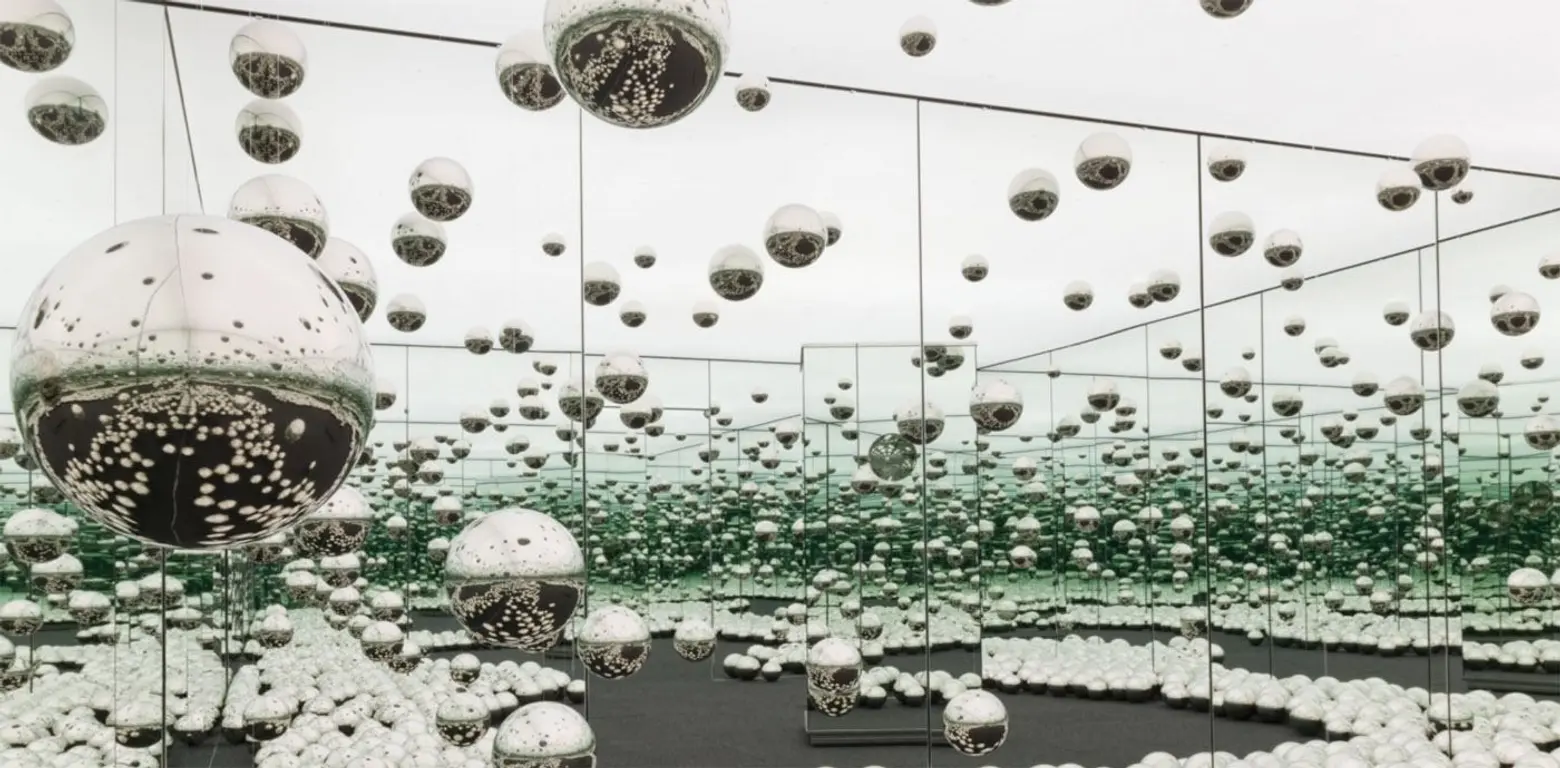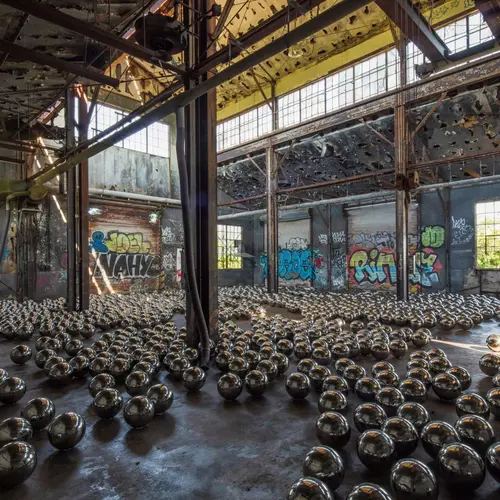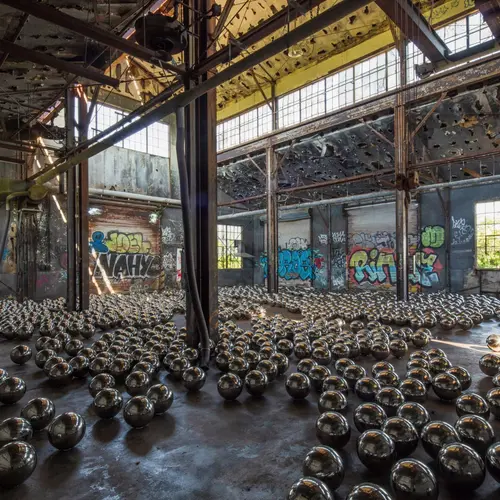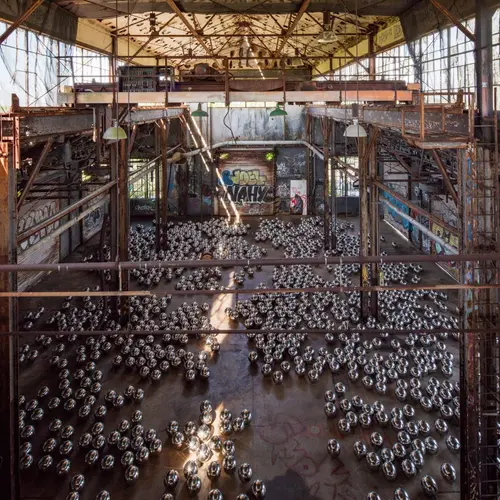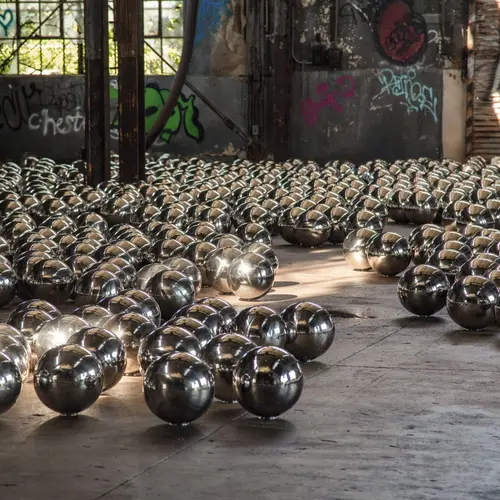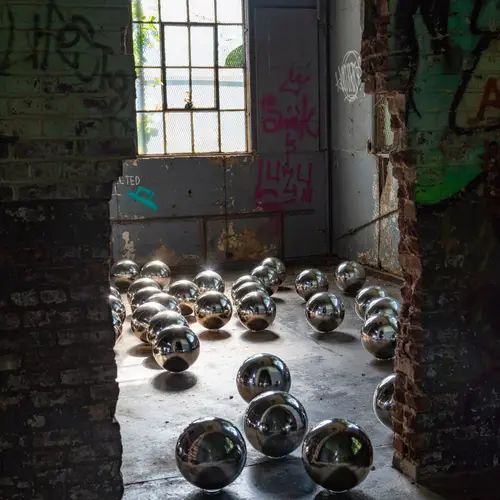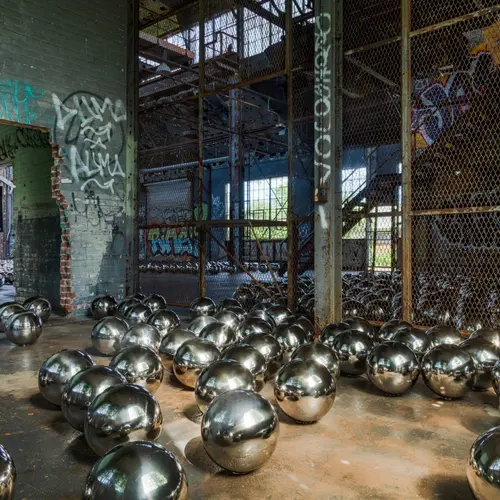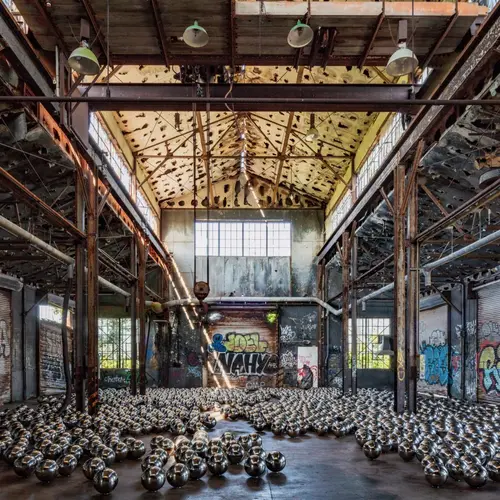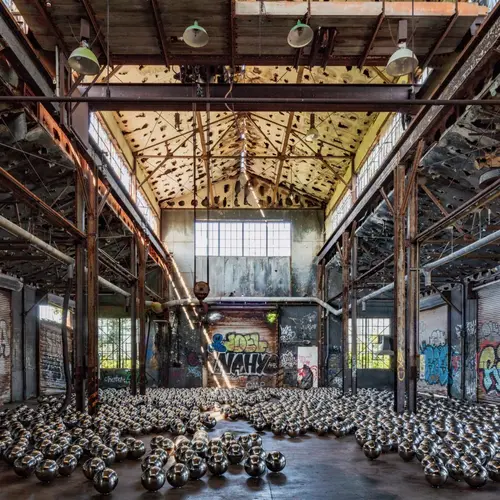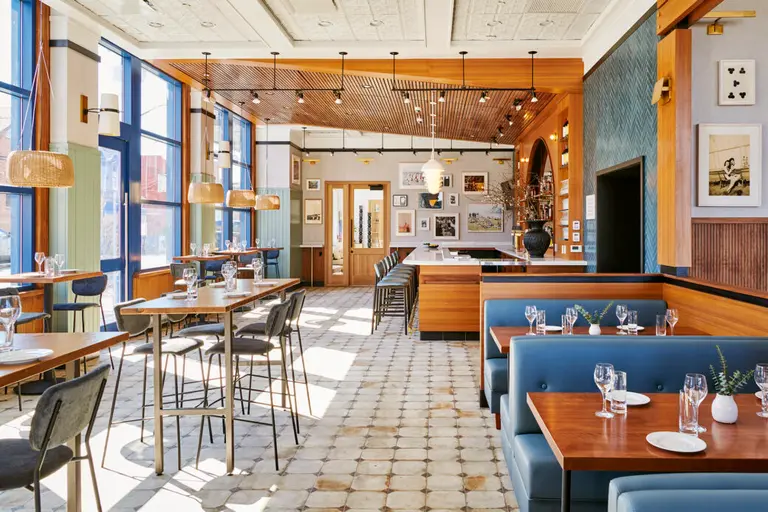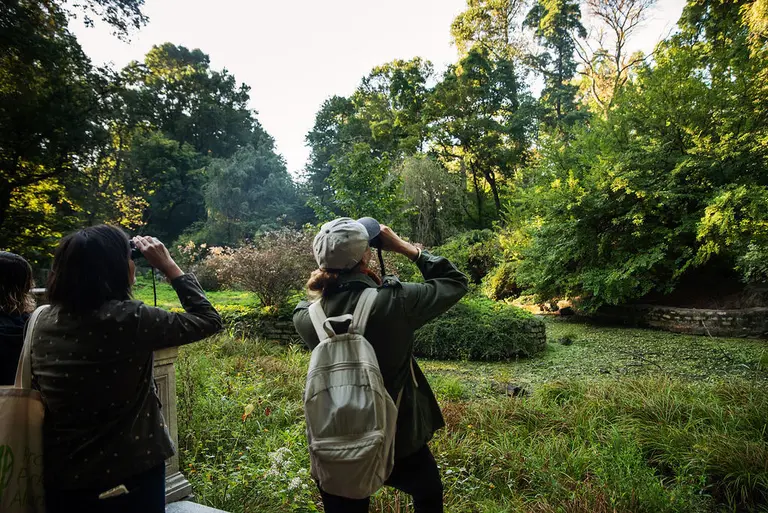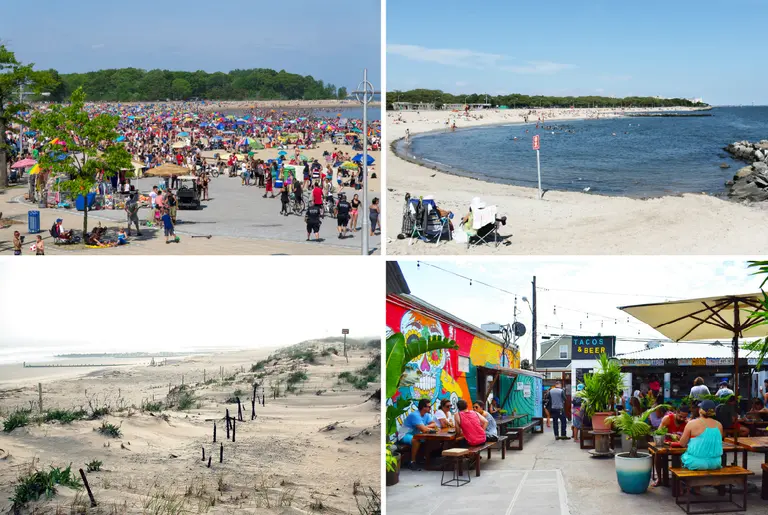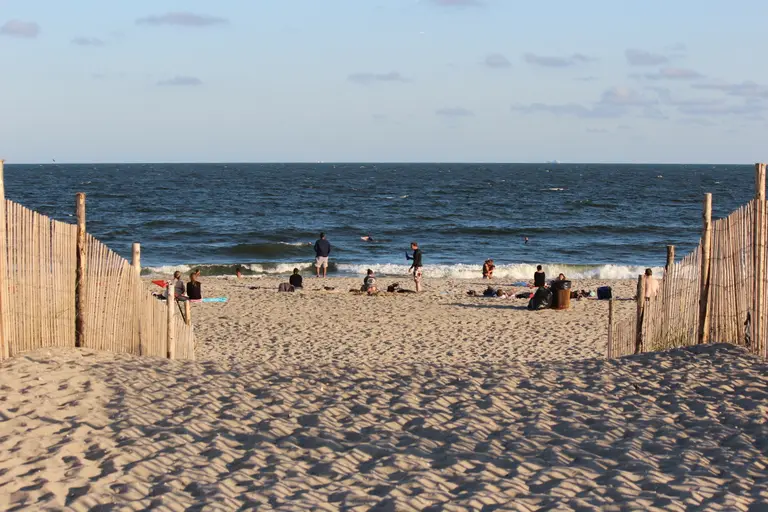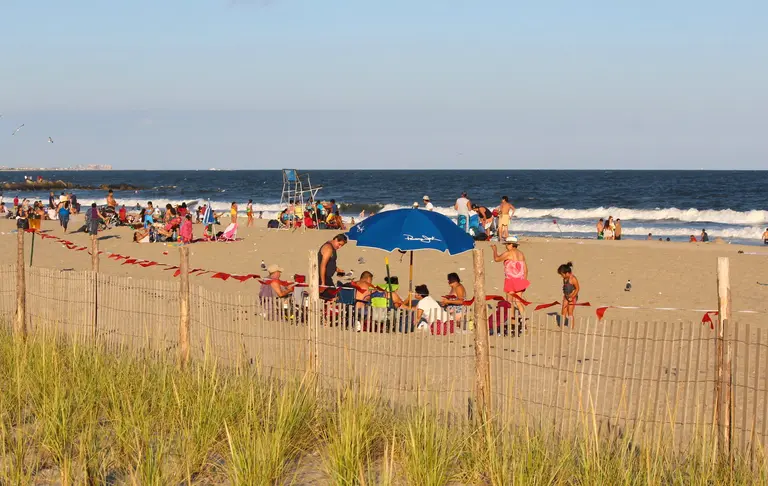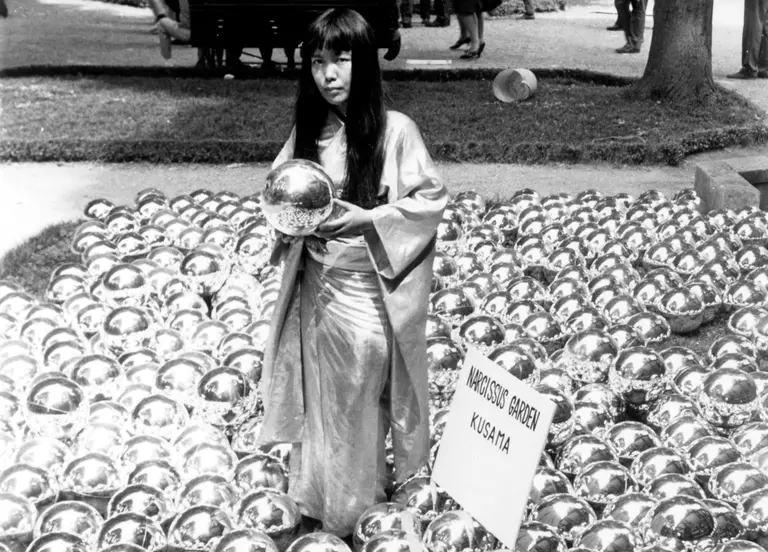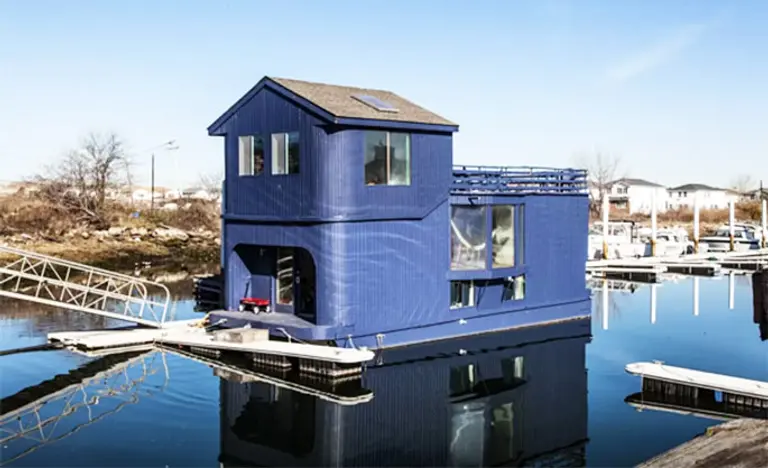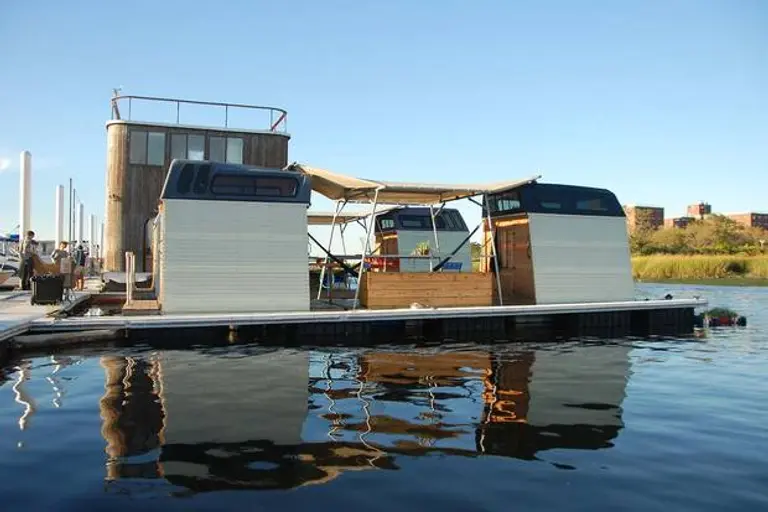Check out artist Yayoi Kusama’s installation in an abandoned Rockaway train garage
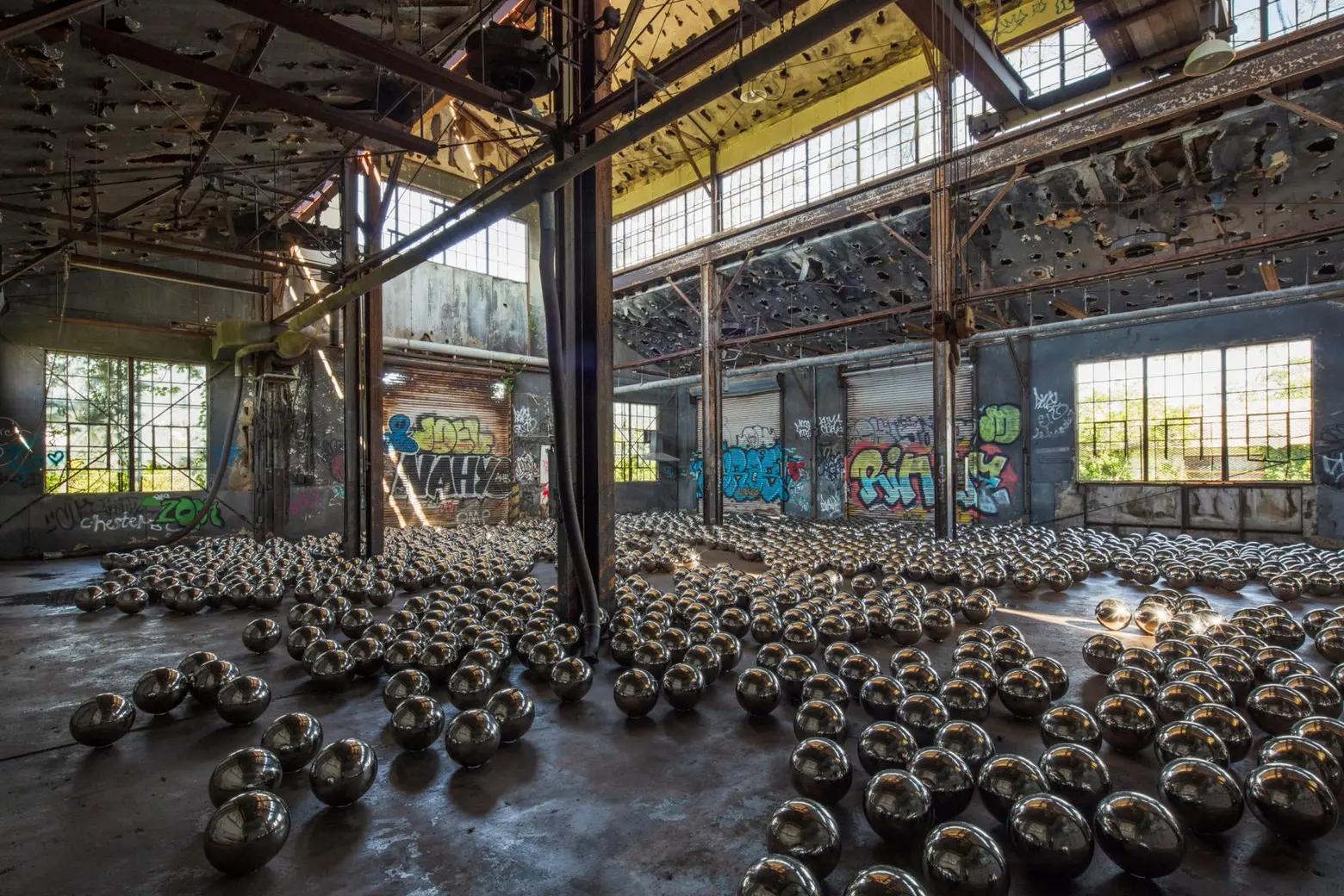
Photograph by Pablo Enriquez
6sqft previously reported on the arrival of “Narcissus Garden,” a site-specific installation made up of 1,500 mirrored stainless steel spheres by Japanese artist Yayoi Kusama as MOMA PS1’s third installment of“Rockaway!,” a free biannual public art program dedicated to the ongoing recovery efforts after Hurricane Sandy. The completely mesmerizing installation is now on view from July 01-September 03, 2018 at Fort Tilden in the Gateway National Recreation Area, in a former train garage that once was an active U.S. military base. Kusama’s mirrored metal spheres reflect the industrial surroundings of the abandoned building and highlight Fort Tilden’s history. According to MoMA, the metal directs attention to the damage inflicted by Sandy in 2012 on the surrounding area.
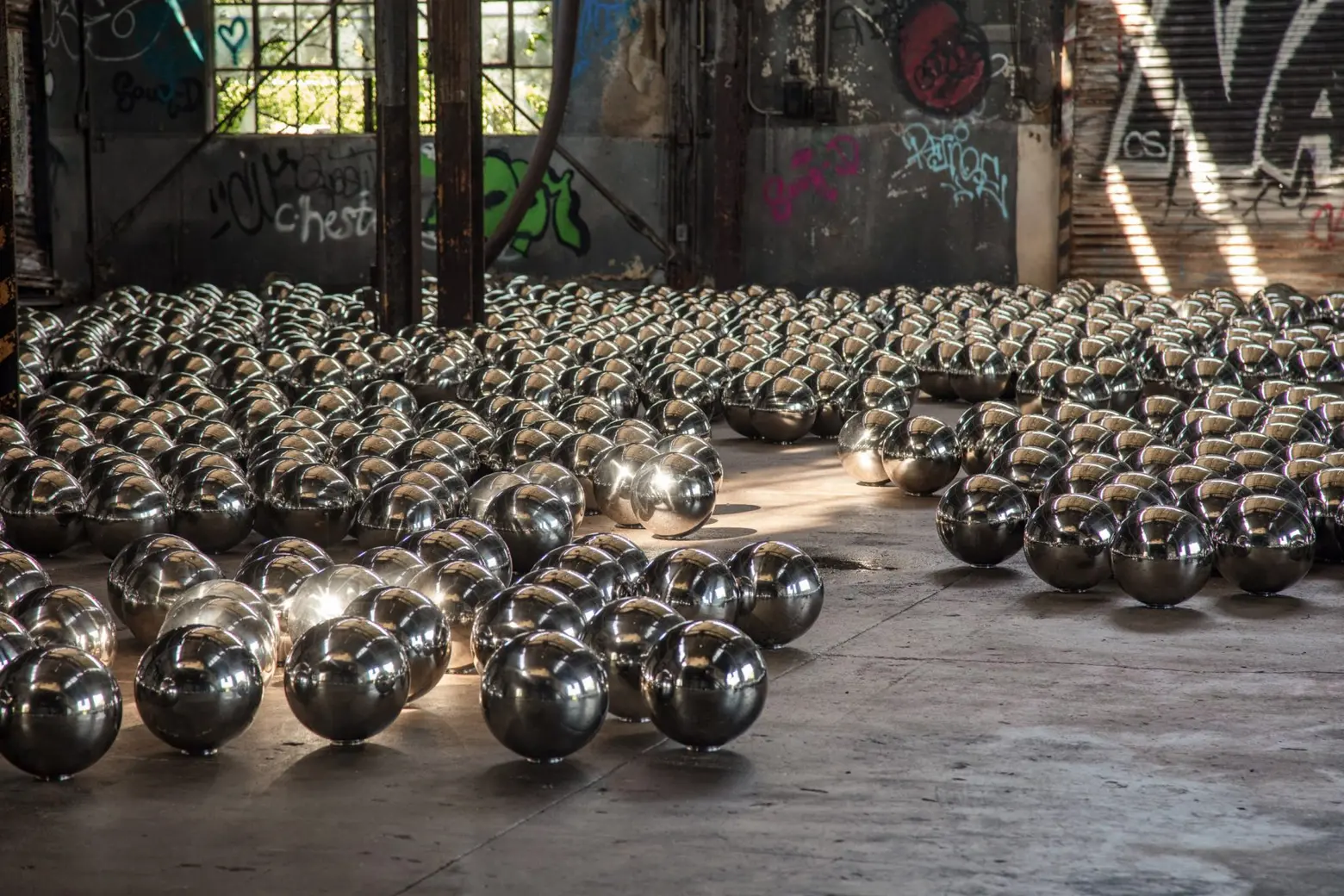
Photograph by Pablo Enriquez
Kusama’s “Narcissus Garden” has quite an amazing history. Originally presented at the 33rd Venice Biennale in 1966, it is often said that Kusama’s Narcissus Garden was as an “unofficial installation.” In her autobiography, Infinity Net, Kusama refutes that explaining, “some have reported that I attempted to participate with an invitation and was sent away but that is not how it was… I was not officially invited but…the chairman himself had helped me install the reflective spheres, so it was hardly a ‘guerilla’ operation.”
In addition to the installation, there was also a performance part which included Kusama standing barefoot and dressed in a gold kimono in the sphere garden with yard signs saying “Narcissus Garden, Kusama” and “Your Narcissism for Sale.” Kusama tossed the spheres in the air and offered to sell them to passers-by for 1200 lire (approximately $2) each.
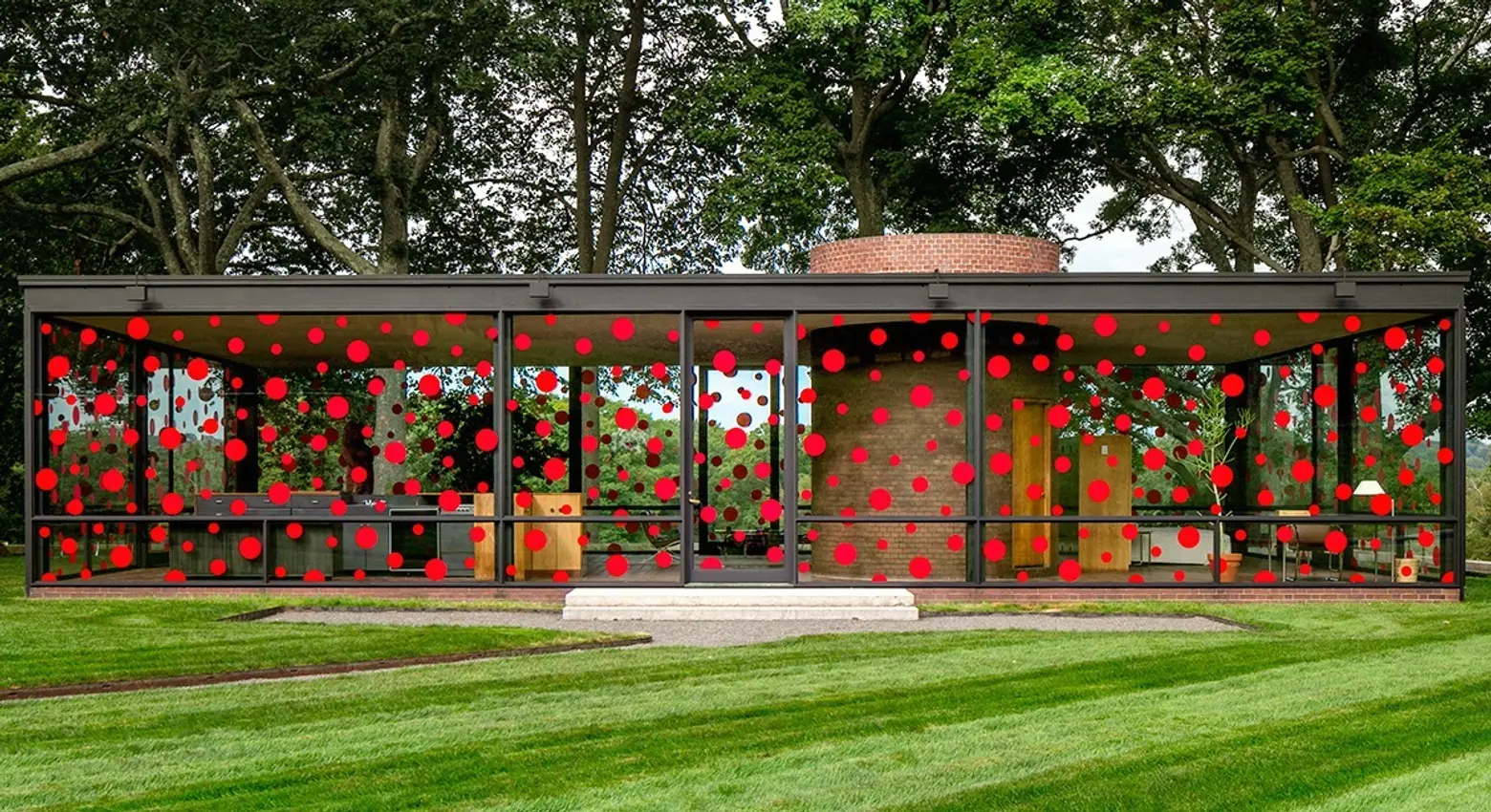
Philip Johnson’s Glass House covered in red polka dots for artist Yayoi Kusama’s “infinity room” installation. Photo by Matthew Placek
Although she was critiqued for this (she reports, “they made me stop, telling me it was inappropriate to sell my artworks as if they were ‘hot dogs or ice cream cones”), it was a major transitional moment in her career from simply creating art to embracing her radical, political point of view.
As her career progressed, so did her performances. Often staged in or near New York City parks and cultural landmarks, Kusama performed Body Festival (1967) in Tompkins Square Park and Washington Square Park, Love In Festival (1968) and Bust Out Happening (1969) in Central Park, and Grand Orgy to Awaken the Dead (1968) in the sculpture garden of The Museum of Modern Art.
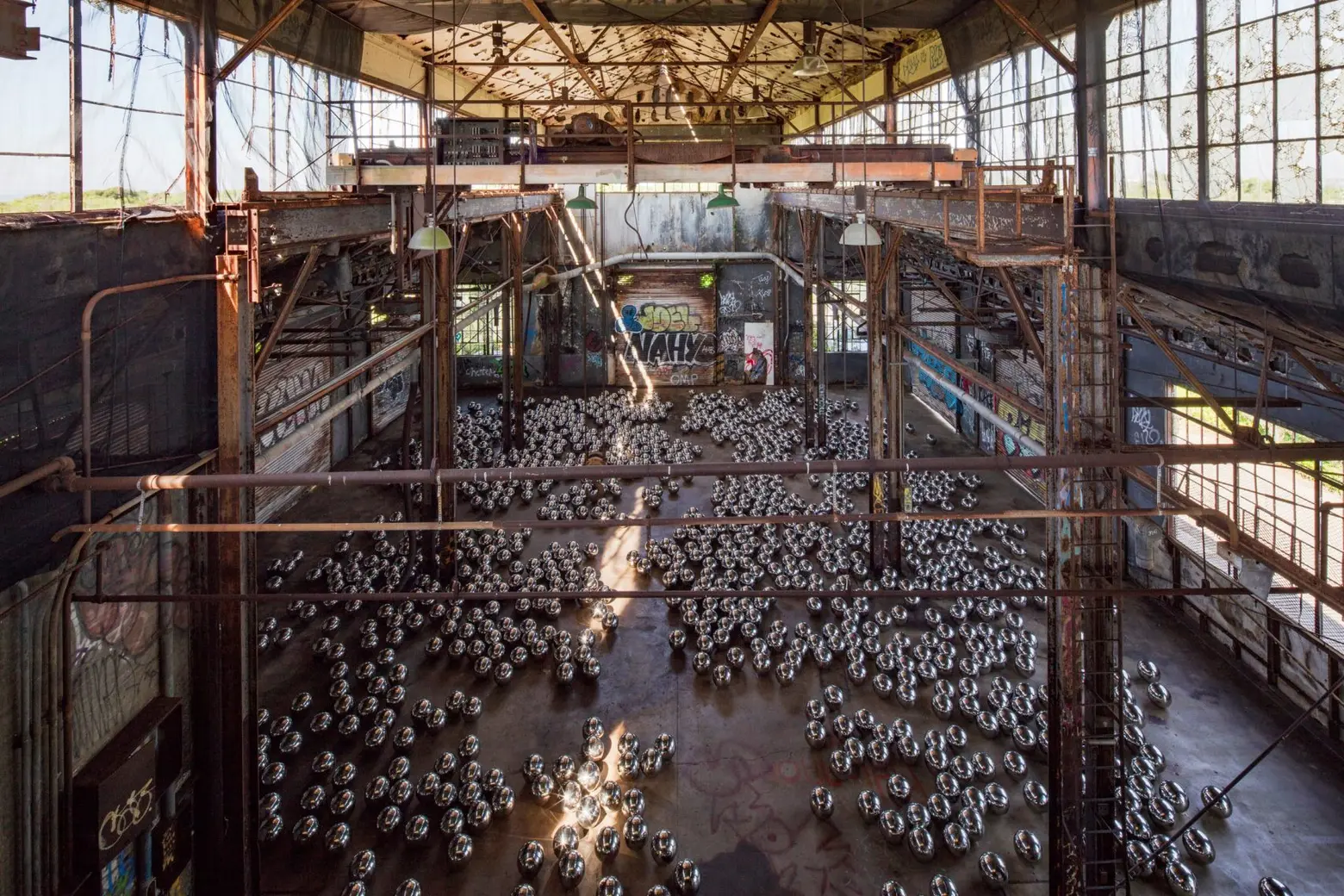
Klaus Biesenbach, director of MoMA PS1 and chief curator-at-large for MoMA, said: “Six years after Hurricane Sandy ravaged the Rockaways, the vulnerable area is still fighting for rebuilding and resilience. Recently, eleven blocks of one of the most popular beaches in Rockaway Park were closed due to erosion following a heavy storm in March.”
Biesenbach added: “To continue to raise awareness of the ongoing restoration work and efforts to ensure the Rockaways are prepared for future effects of climate change, the collaboration between Bloomberg Philanthropies, National Park Service, Jamaica Bay Rockaway Beach Conservancy, Rockaway Artists Alliance, and MoMA PS1 continues with the third iteration of Rockaway! created in close collaboration with Yayoi Kusama, evoking her youthful, courageous, and adventurous spirit with a work she first exhibited as an emerging artist, like many of the artists who live and work in the Rockaways right now.”
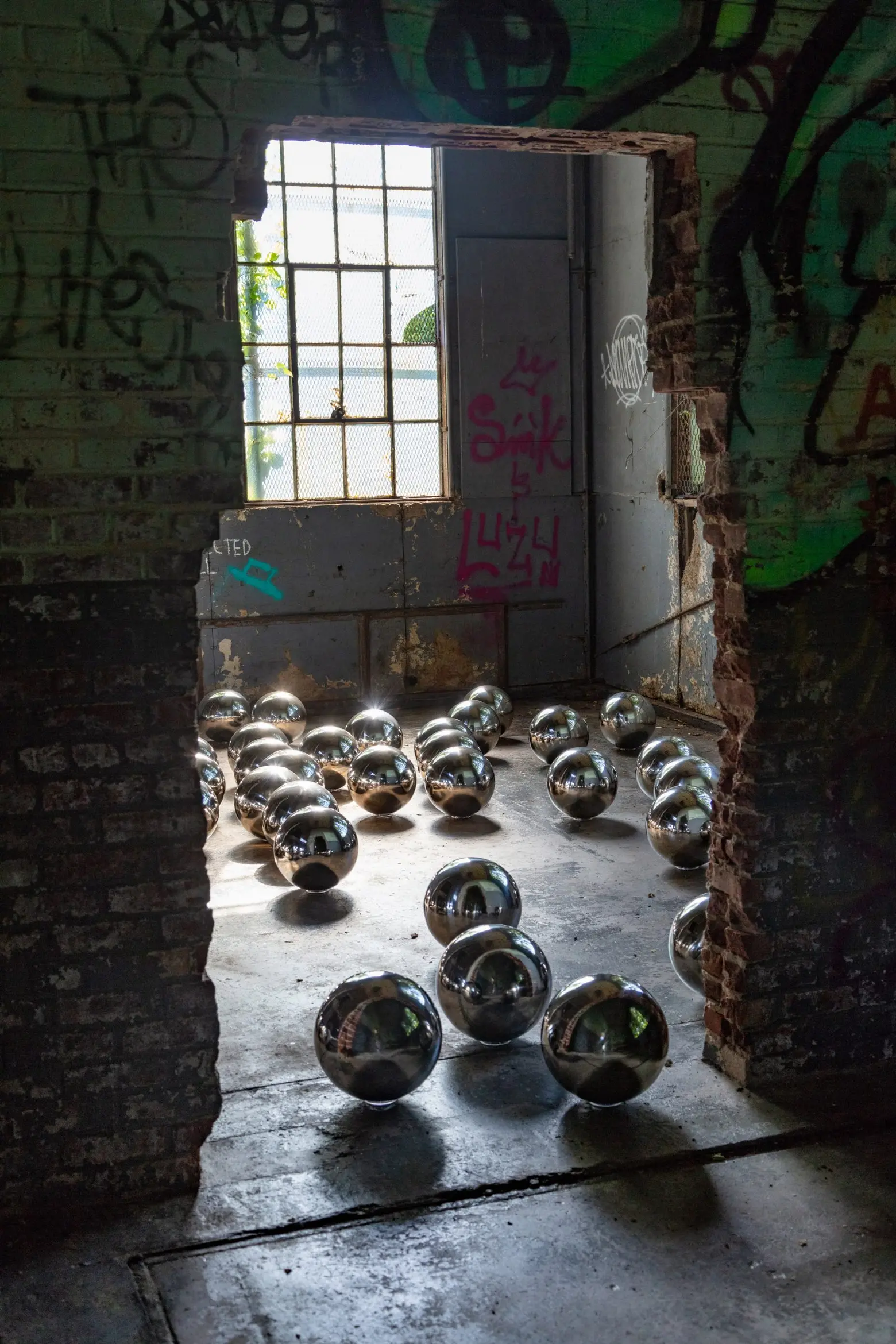
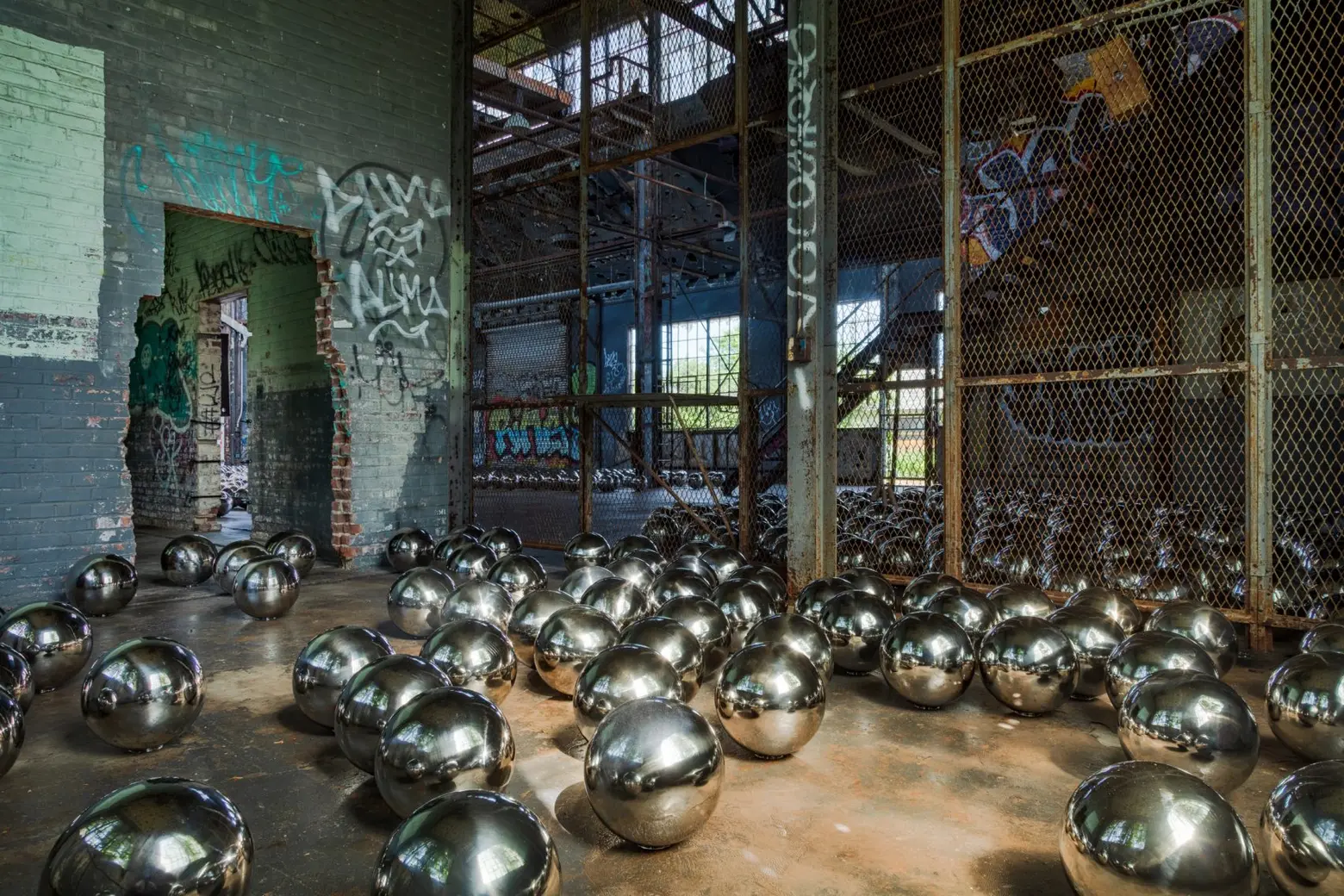
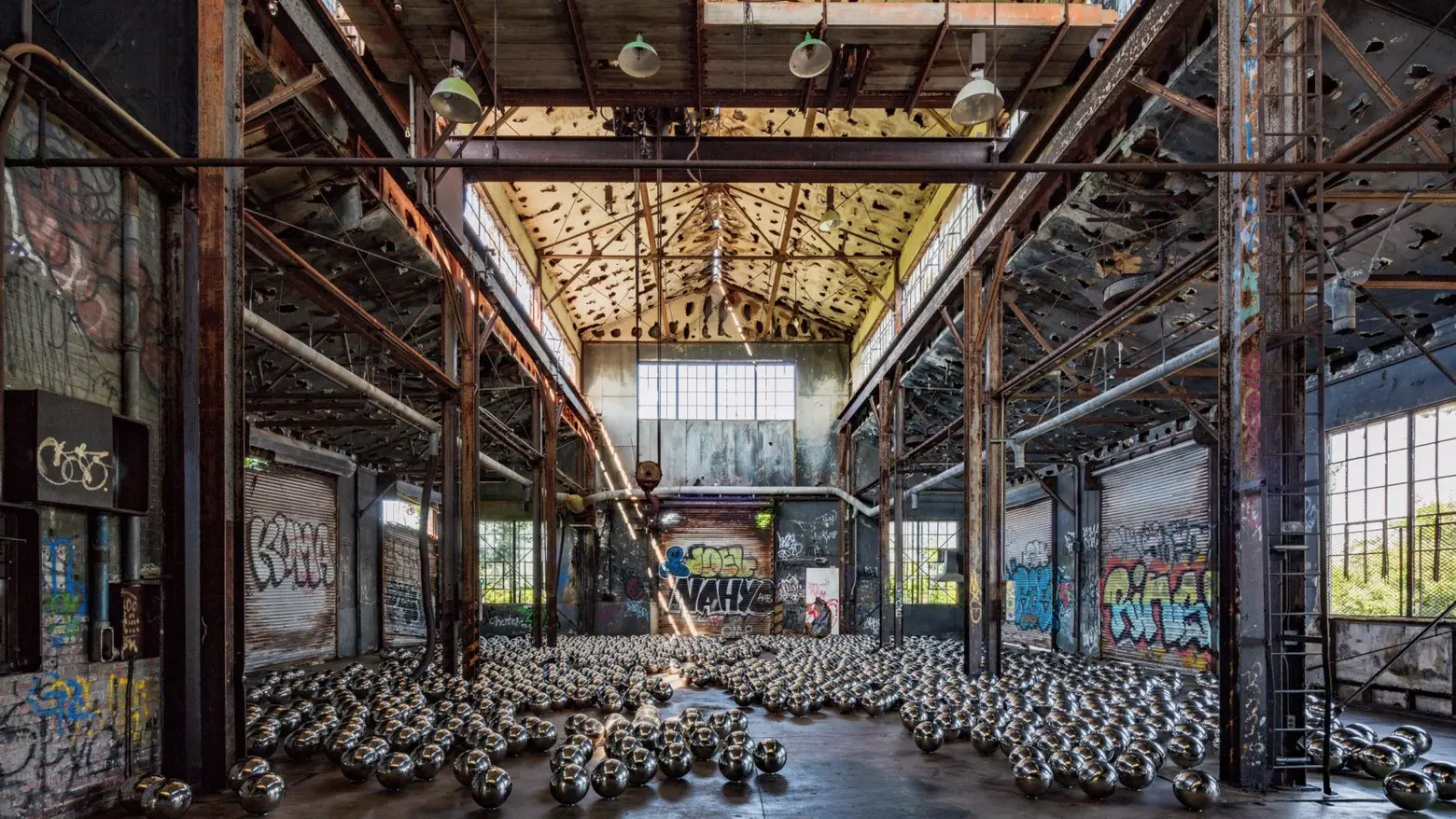
Photography by Pablo Enriquez
Yayoi Kusama arrived in the New York in 1957 and has not stopped wowing us since. In her typical highly thoughtful way, she wrote in her book: “I fluctuate between feelings of reality and unreality…I find myself stranded in a strangely mechanised and standardised, homogeneous environment. I feel this most keenly in highly civilized America, and especially New York.”
Learn more about the event here.
RELATED:
